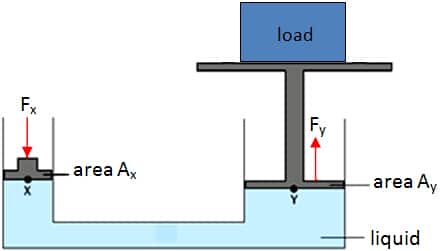
Hydraulic press systems are remarkable feats of engineering, capable of generating immense force to shape, lift, and compress materials with utmost precision. From automotive workshops to heavy-duty industrial applications, these systems play a crucial role in numerous sectors.
Components of a Hydraulic Press System
1. Power Unit:
– The power unit is the heart of a hydraulic press system, consisting of an electric motor that drives a hydraulic pump. The pump generates the necessary pressure within the system, drawing hydraulic fluid from the reservoir.
2. Reservoir:
The reservoir acts as a storage tank for the hydraulic fluid. It ensures a continuous supply of fluid to the pump and dissipates heat generated during operation.
3. Control Valve:
The control valve regulates the flow of hydraulic fluid to and from the hydraulic cylinder. It allows the operator to control the speed and direction of the ram movement.
4. Hydraulic Cylinder:
The hydraulic cylinder converts hydraulic pressure into mechanical force, causing the ram to extend or retract. It is the primary actuator responsible for applying force to the workpiece.
5. Ram:
– The ram is the movable part of the hydraulic cylinder that makes direct contact with the workpiece.
– It can be equipped with various tooling or attachments to suit specific applications.
Working Principle of Hydraulic Press Systems
Step 1: Power Generation:
When the operator activates the hydraulic press, the electric motor powers the hydraulic pump.
The pump draws hydraulic fluid from the reservoir and pressurizes it.
Step 2: Fluid Flow Regulation:
The pressurized fluid is directed to the control valve, which regulates its flow based on the operator’s input.
– The control valve allows precise control over the speed and direction of the ram movement.
Step 3: Ram Extension and Retraction:
– The controlled flow of fluid enters the hydraulic cylinder, causing the ram to extend or retract.
– The ram applies force to the workpiece, deforming or shaping it as desired.
– After the pressing operation is complete, the control valve is adjusted to reverse the flow of fluid.
– The hydraulic fluid returns to the reservoir, and the ram retracts to its initial position, ready for the next cycle.
Advantages of Hydraulic Press Systems
1. Immense Force Generation:
– Hydraulic press systems can generate enormous forces, making them ideal for heavy-duty applications such as metal forming, stamping, and forging.
2. Precise Control:
– The control valve enables operators to regulate the speed and direction of ram movement with high precision.
– This allows for accurate positioning and controlled application of force, ensuring consistent and precise results.
3. Versatility:
– Hydraulic press systems can be customized with different tooling and attachments to accommodate a wide range of materials and processes.
– This versatility makes them suitable for various industries and applications.
4. Durability and Reliability:
– Hydraulic systems are renowned for their durability and reliability, making them well-suited for continuous.
Written by profT for naijatipsland.com










